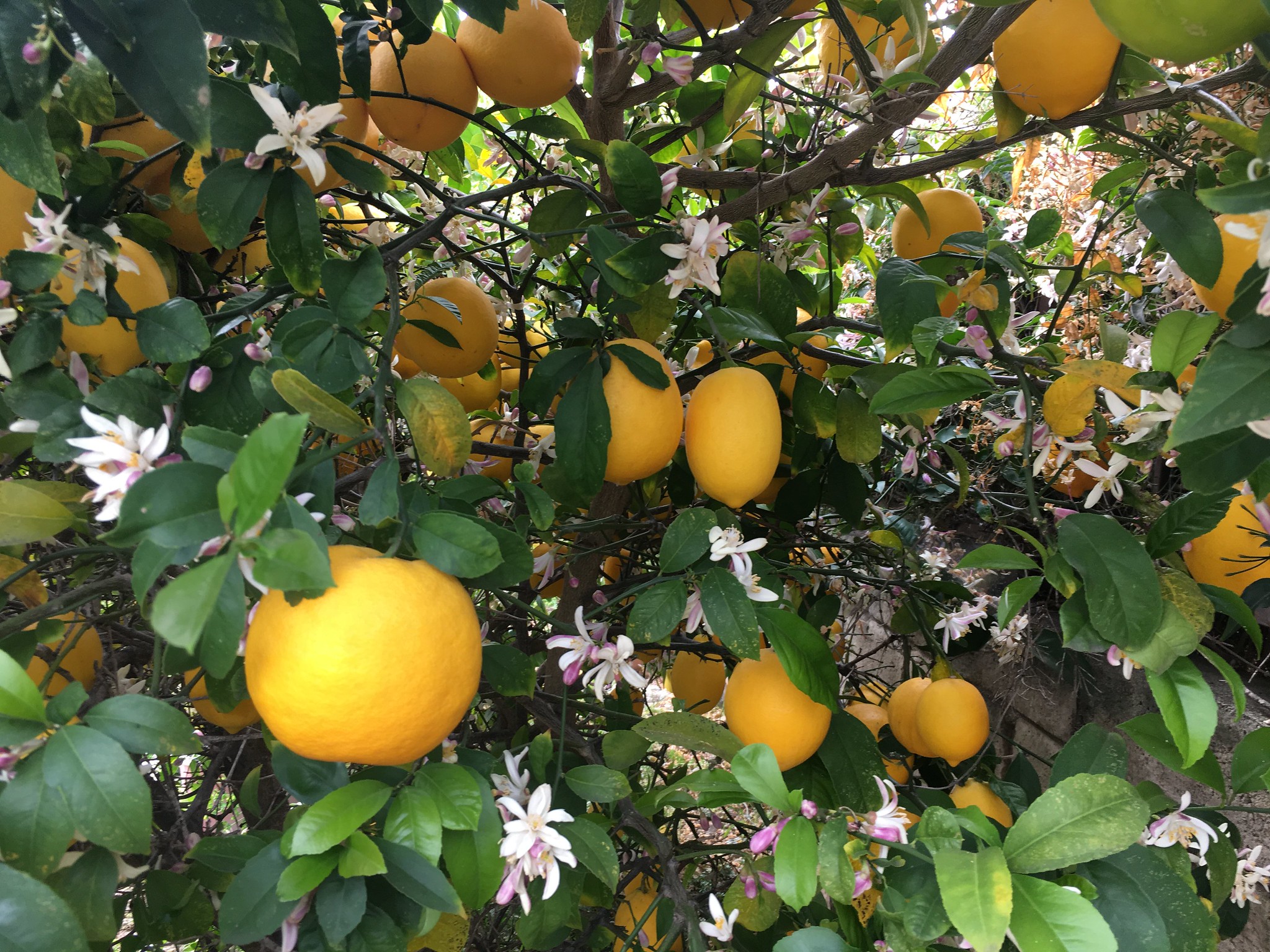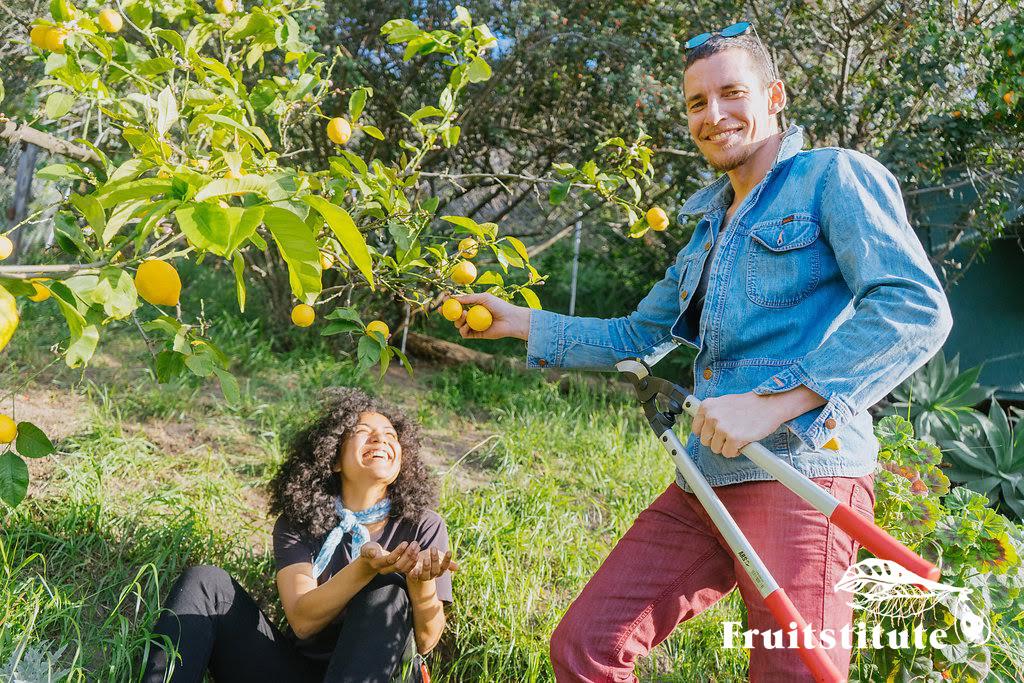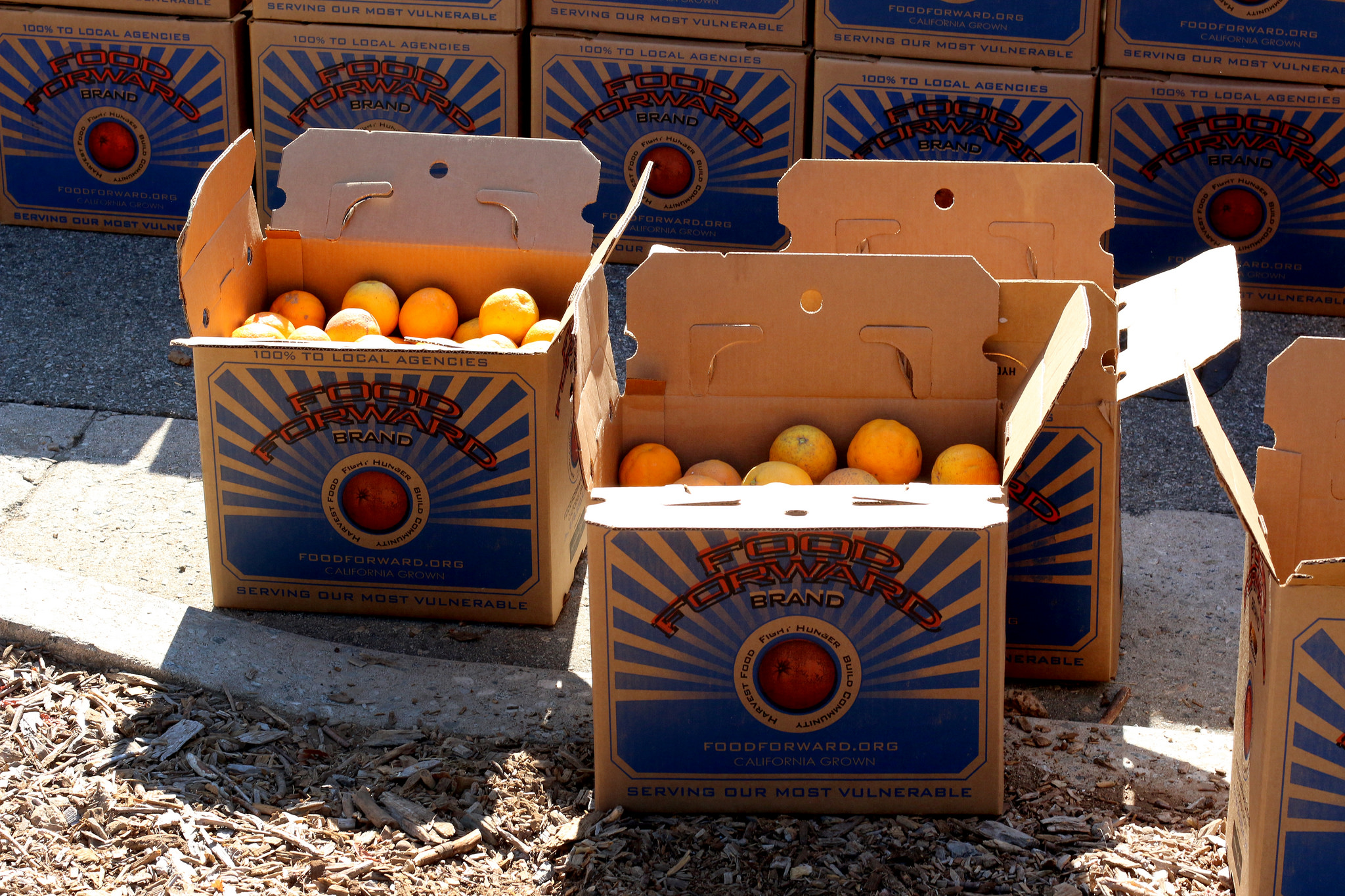8.14.18 — Joanna Glovinsky, founder of the Fruitstitute, a Los Angeles based fruit tree care and education service for backyard growers, explains why gleaning excess fruit on your tree is fundamental to maintaining a healthy backyard ecosystem.
We’ve all seen them. The citrus tree in a Los Angeles yard bursting with fruit. Oranges are piled up below the tree on the sidewalk and on the lawn, fallen fruit going to waste. At first, you may think, “Wow! What a productive tree.” As a person who works with backyard fruit trees in Los Angeles, I see this and think, “Someone better glean this fruit and cleans up this mess before the trees get hurt.”

To see these trees as I do, you first have to understand that the species of fruit trees common in our backyards today have been cultivated by humans for centuries. Our human ingenuity has designed these trees with the primary purpose to give us fruit. So, when we do not pick that fruit and instead leave it on the tree or the ground to rot, we are not properly caring for our tree. Fruit left to rot attracts bugs, fungus, and bacteria that break down organic waste and return it back to the soil. However, because our fruit trees are not designed for forest life and because the backyard garden is a manmade ecosystem, it’s not a good idea to invite these bugs into your home. Doing so can severely compromise the health of your entire garden and that of your neighbors. Bottom line: leaving fruit to rot is a big no-no. It’s counterintuitive to the purpose of a fruit tree.
Leaving fruit to rot is a big no-no. It’s counterintuitive to the purpose of a fruit tree.
Proper fruit tree care requires canopy sanitation at the end of each harvest. Once the fruit is mature and you’ve picked more than you and yours can handle, you need to clean your canopy of dead, diseased, and damaged wood (which also invite the decomposing pests), collect all excess fruit, and properly dispose of any fallen fruit.
In the tree world, canopy sanitation is a basic part of Integrated Pest Management (IPM), a strategy that works to promote the health of the garden ecosystem as the most effective means for long-term pest prevention. Accordingly, the first choice method in IPM are those that keep pests from establishing in your backyard. Pests feed on decay and love rotten fruit. After invited in, they can set up shop and establish colonies in your soil and in the live tissue of the tree. So, if you had any sort of pest issues with this year’s harvest, these pests will almost certainly return if you don’t take proper measures to clean out the infestation. If you had no issues, but leave the moldy fruit where it is, you’re asking for them. Moreover, the longer you invite these pests to feed on your tree, the more energy the tree has to expend on fighting them off and the less energy it has to produce normal growth. Over the years, your tree’s immune system will eventually become severely compromised and what was once a bright bubbly orange tree bursting with fruit two times a year, becomes a sad sorry defoliated unfruitful tree.
In short, taking the fruit your tree provides is a fundamental part of a healthy, prosperous long-term relationship with your tree. If you can’t do the gleaning yourself, your tree will be just as happy if you call Food Forward to do it for you. They can turn your waste into another man’s treasure, free of charge.
Please note that for safety purposes, Food Forward can only harvest fruit below 15 feet. They will glean as much fruit on the tree as possible, but cannot always get it all. If there’s a little leftover that should be OK. The fruit should eventually drop. If you prune your tree annually, you can maintain it at a pickable size.
Photo by Samy’s Camera Outreach


